7 Smart Content Repurposing Strategies for 2025
Unlock peak efficiency with our 2025 guide to content repurposing strategies. Learn how to maximize your content's impact with actionable AI-powered tips.
Creating high-quality content requires significant investment in time, research, and creative energy. So, why let a valuable asset have only one moment in the spotlight? The most effective content marketers understand that a single great idea can fuel an entire campaign through strategic reuse. This is the core principle behind content repurposing strategies: maximizing the value of your initial efforts by transforming one piece of content into multiple formats for different platforms and audiences. By doing so, you not only save resources but also amplify your message, boost SEO, and reinforce your authority across various channels.
This comprehensive guide moves beyond generic advice to provide a detailed roadmap for intelligent content transformation. We'll explore seven distinct and powerful strategies, from atomizing a long-form article into a series of engaging social media posts to adapting a webinar for a global, multilingual audience. Each strategy is paired with actionable insights on how to use Zemith’s advanced AI tools to automate and enhance the process, turning what was once a time-consuming task into a streamlined, creative workflow. For a deeper dive into the benefits and strategies of content reuse, explore how to effectively implement repurposing social media content. Prepare to learn how to work smarter, not harder, and unlock the full potential of every piece of content you create.
1. Strategy 1: Hyper-Efficient Content Atomization with Zemith's Document Assistant
Content atomization is the process of breaking down a large, foundational piece of content into smaller, standalone assets. This is one of the most effective content repurposing strategies because it allows you to multiply your output from a single effort. Instead of a one-and-done webinar or white paper, you create a content ecosystem that fuels your marketing channels for weeks or months.
Zemith’s Document Assistant revolutionizes this process by using AI to intelligently deconstruct your core content. It goes beyond simple copy-pasting by analyzing the structure, key themes, and data points within your original document to suggest and generate a multitude of new assets.
How to Implement with Zemith
Imagine you have just published a comprehensive 5,000-word guide on "The Future of Machine Learning in E-commerce." Here’s how you can atomize it using Zemith:
- Upload Your Core Asset: Start by uploading your guide into Zemith’s Document Assistant.
- Activate the 'Content Atomizer' Prompt: Use a specific command like, "Atomize this guide into multiple content formats. Identify key statistics, expert quotes, and actionable steps."
- Generate and Refine Micro-Content: Zemith will instantly parse the document and produce a list of potential micro-assets.
Pro-Tip: Don’t just accept the first output. Use Zemith's chat interface to refine the results. For instance, ask it to "Expand the section on personalized recommendations into three separate Twitter threads" or "Generate five compelling LinkedIn post hooks based on the guide's main conclusions." This iterative process within Zemith helps you perfect each asset for maximum engagement.
From One Guide to Many Assets
Using this method, your single guide can be transformed into a diverse range of content, including:
- Social Media Posts: Dozens of unique posts for LinkedIn, Twitter, and Facebook, each highlighting a different statistic or finding.
- Blog Post Spin-offs: Two or three shorter blog posts that dive deeper into specific sub-topics mentioned in the guide, like "How AI is Reducing Cart Abandonment."
- Email Newsletter Snippets: A series of emails for your newsletter, each teasing a different chapter of the guide to drive downloads.
- Infographic Scripts: A script and data points ready for your design team to create a visually engaging infographic.
This hyper-efficient approach, powered by Zemith, ensures that every piece of long-form content you create achieves its maximum possible reach and impact, saving you hundreds of hours in brainstorming and manual content creation.
2. Cross-Platform Adaptation with Zemith's Tone & Style Suite
Cross-platform adaptation is the art of modifying your core message to fit the unique audience expectations, formats, and algorithms of different channels. This is one of the most crucial content repurposing strategies because a one-size-fits-all approach rarely works. Content that excels on LinkedIn will likely fall flat on TikTok without significant changes to its tone, length, and style.

Zemith’s Tone & Style Suite acts as your digital chameleon, enabling you to instantly re-engineer your content for any platform. Instead of manually rewriting posts, you can use AI to seamlessly adjust the voice, format, and complexity, ensuring your message always feels native to the environment where it's published. This saves time and dramatically increases your content's resonance and engagement.
How to Implement with Zemith
Let’s say you’ve written a formal, data-heavy blog post about "AI’s Impact on Supply Chain Logistics." Here's how to adapt it for different platforms using Zemith:
- Input Your Base Content: Copy the key message or a summary of your blog post into Zemith’s editor.
- Activate the 'Tone & Style' Prompt: Use a command like, "Adapt this text for a witty and sarcastic Twitter thread. Then, create a professional, authoritative version for a LinkedIn article."
- Generate and Customize Platform-Specific Versions: Zemith will produce distinct versions tailored to each network's best practices.
Pro-Tip: Refine the AI's output by providing more context. For example, ask Zemith to "Rewrite the LinkedIn version to target C-suite executives by focusing on ROI," or "Turn the key statistics into a script for a 30-second, high-energy Instagram Reel." With Zemith, you can fine-tune outputs until they perfectly match your strategic goals for each platform.
From One Message to Platform-Perfect Content
With this approach, your single blog post can be expertly translated into a variety of channel-optimized assets:
- LinkedIn Article: A professional, thought-leadership piece that highlights the business implications and strategic insights.
- Twitter Thread: A series of short, punchy tweets with emojis and hashtags that break down the complex topic into digestible bites.
- Instagram Carousel: A visually-driven post with concise, impactful text overlays for each slide, focusing on the most surprising statistics.
- Facebook Post: A more conversational summary designed to spark discussion and encourage comments from a broader community audience.
This strategic adaptation, powered by Zemith, ensures your core ideas are effectively communicated across the entire digital landscape, maximizing engagement without multiplying your workload. Explore how AI can streamline your preliminary research and make your content more effective with these AI tools for research.
3. Strategy 3: Seamless Format Transformation with Zemith's AI Toolkit
Format transformation is the art of converting content from one medium to another, like turning a blog post into a video or a podcast into an article. This powerful content repurposing strategy is crucial for reaching different audience segments who prefer specific media formats. Instead of creating new content from scratch for each channel, you adapt a single, high-value message to thrive across multiple platforms.

Zemith’s AI toolkit makes this transformation seamless. By understanding the core narrative and key data points of your original piece, Zemith can generate scripts, summaries, and structured text optimized for entirely new formats, drastically reducing manual effort and production time. This approach allows you to maximize the value of your best ideas without needing expertise in every single format.
How to Implement with Zemith
Let’s say you have a popular podcast episode discussing "Ethical AI in Modern Marketing." You can use Zemith to transform it into various other assets:
- Upload Your Transcript: Begin by uploading the podcast episode transcript into Zemith’s Document Assistant.
- Use a Transformation Prompt: Command the AI with a specific request like, "Convert this podcast transcript into a 1,200-word, well-structured blog post with clear headings. Also, create a script for a 3-minute summary video."
- Generate and Adapt Content: Zemith will produce the requested formats, structuring the chaotic nature of a conversation into a coherent, readable article and a concise video script.
Pro-Tip: Take your repurposed video content a step further. After generating a script with Zemith, you can learn how to create interactive videos that convert viewers into active participants, making your Zemith-powered repurposing efforts even more engaging and impactful.
From One Podcast to a Multi-Format Campaign
With Zemith's help, your single podcast episode can be expertly repurposed into:
- A Detailed Blog Post: A comprehensive article that captures the key insights from the conversation, complete with quotes and data points.
- A Short-Form Video Script: A punchy script perfect for a YouTube Short, Instagram Reel, or TikTok video.
- An Email Newsletter Summary: A condensed version of the episode’s highlights to share with your subscribers, driving traffic to the original audio.
- A LinkedIn Article: A professionally toned article based on the transcript, positioned for a business-oriented audience on LinkedIn.
This strategy ensures your core message resonates across different platforms, engaging audiences no matter how they prefer to consume content. By leveraging the best AI content generators within the Zemith platform, you can execute these complex transformations with unparalleled speed and quality.
4. Strategy 4: Evergreen Refresh with Zemith's Content Assistant
Temporal repurposing involves strategically updating and republishing your existing high-performing content to maintain its relevance and extend its lifespan. This is one of the most powerful content repurposing strategies because it capitalizes on assets that have already proven their value. Instead of letting a successful blog post fade into obscurity, you can systematically refresh it to capture new audiences and maintain its search engine authority.

Zemith’s Content Assistant is the perfect tool for this task, automating the most time-consuming aspects of the update process. The AI can quickly scan your old content, identify outdated information, and suggest current data, examples, and statistics to bring it up to date. This turns a multi-hour research and rewrite job into a streamlined, efficient workflow.
How to Implement with Zemith
Let’s say you have a popular blog post from two years ago, "Top 5 Social Media Trends," that is starting to see a decline in traffic. Here's how to revive it using Zemith:
- Paste Your Content: Copy the text from your existing blog post and paste it into Zemith’s Content Assistant.
- Activate the 'Content Refresh' Prompt: Use a specific command like, "Update this article for the current year. Find and replace outdated statistics, remove irrelevant trends, and suggest new examples related to recent platform changes."
- Review and Integrate Suggestions: Zemith will highlight outdated sections and provide fresh, relevant information. It can generate new introductions, conclusions, and even brand-new sections to reflect the current landscape.
Pro-Tip: Maximize your refresh by asking Zemith for derivative assets. Use a follow-up prompt like, "Based on this updated article, create a new title and meta description optimized for SEO, and generate three LinkedIn posts announcing the updated guide." Zemith can handle the heavy lifting of not just updating, but also re-promoting the content.
From Old Post to Renewed Authority
By using this strategy, your single outdated article gets a new lease on life and can be republished as a fresh, authoritative piece. This can lead to:
- Renewed SEO Performance: Google rewards fresh, up-to-date content, often resulting in a significant boost in search rankings for your original URL.
- Updated Social Promotion: You can promote the "newly updated" guide across all your social channels, capturing the attention of both old and new followers.
- Increased Trust and Credibility: Demonstrating that you maintain and update your content shows your audience that you are a reliable and current source of information.
- Efficient Content Calendar Filling: Scheduling regular content refreshes is an easy and effective way to ensure your content calendar is always full of high-value material.
This intelligent refresh process, streamlined by Zemith, ensures your best content continues to work for you long after its original publication date, maximizing your ROI without requiring you to start from scratch.
5. Strategy 5: Audience Segmentation Repurposing with Zemith’s Persona Generator
Audience segmentation repurposing involves adapting a single core message to resonate with different customer personas. This powerful approach to content repurposing strategies acknowledges that a one-size-fits-all message rarely works. A guide for a small business owner has different priorities, pain points, and language than one for an enterprise-level executive, even if the underlying topic is the same.
Zemith’s Persona Generator streamlines this by using AI to analyze a core topic and instantly create detailed audience personas. It then helps you rewrite or reframe your content, suggesting specific angles, examples, and terminology that will connect deeply with each distinct segment.
How to Implement with Zemith
Let’s say you’ve written a white paper on "Implementing AI for Enhanced Customer Support." You want to target both startups and large corporations.
- Define Your Core Topic: Input the main theme of your white paper into Zemith.
- Activate the 'Persona Generator' Prompt: Use a command like, "Generate two distinct buyer personas for this topic: a tech-savvy startup founder and a risk-averse corporate IT manager. Then, suggest how to adapt the introduction and key case studies for each persona."
- Generate and Refine Segmented Content: Zemith will produce detailed personas and provide rewritten content variations tailored to each one.
Pro-Tip: Take it a step further. After generating the personas, use Zemith's chat to ask for specific assets. For example, "Create a LinkedIn post for the startup founder persona focusing on agility and cost-savings," or "Draft an email for the IT manager persona emphasizing security, scalability, and seamless integration." Zemith turns persona theory into actionable marketing collateral.
From One Message to Many Voices
Using this method, your single white paper can be effectively customized to speak directly to your most important audience segments:
- Targeted Landing Pages: Create separate landing pages for the same asset, each with headlines and copy that address the specific motivations of each persona.
- Customized Case Studies: Adapt your examples. For startups, highlight a story of rapid growth; for enterprises, feature a case study on large-scale deployment and ROI.
- Segment-Specific Email Campaigns: Develop email nurture sequences where the language, subject lines, and calls-to-action are tailored to each persona’s known goals.
- Varied Blog Post Angles: One post can focus on "5 Low-Cost AI Tools for Startup Support Teams," while another addresses "How to Get Enterprise Buy-In for an AI Support Platform."
This strategy, made efficient by Zemith, ensures your valuable content isn't just seen, but felt, by the people who matter most. It moves beyond generic messaging to build stronger connections and drive higher-quality conversions across your entire market.
6. Strategy 6: Transform Core Insights into an Engaging Content Series
Content series development is the art of breaking down a large, multifaceted topic into a sequence of interconnected episodes or articles. This is one of the most powerful content repurposing strategies for building an engaged community. Instead of overwhelming your audience with a single, massive piece of content, you deliver value in digestible, recurring installments that keep them coming back for more.
Zemith’s Document Assistant is an ideal partner for this strategy, helping you to meticulously plan and generate the individual pieces of your series. By analyzing a foundational asset like a research paper or an in-depth guide, Zemith can identify sub-themes, logical progressions, and compelling data points that can form the backbone of each episode.
How to Implement with Zemith
Let’s say you’ve written a comprehensive white paper on "Ethical AI Implementation in SaaS." A single document dump might not get the sustained attention it deserves. Here’s how to use Zemith to create a series:
- Upload Your Foundational Document: Input your white paper into Zemith’s Document Assistant.
- Use a Series-Mapping Prompt: Command Zemith with a prompt like, "Outline a 5-part blog post series based on this white paper. Each part should cover a distinct stage of ethical AI implementation, from data sourcing to model transparency."
- Generate and Flesh Out Each Episode: Zemith will produce a structured outline for the entire series. You can then use it to draft each installment by asking it to, "Write the first blog post in this series, focusing on the 'Ethical Data Sourcing' section of the original document. Include key takeaways and a hook for the next post."
Pro-Tip: Ensure continuity by asking Zemith to "Create a summary of Part 1 and a teaser for Part 3 to include at the beginning and end of Part 2." This reinforces the series format and encourages binge-reading, turning Zemith into your automated series editor.
From One White Paper to a Full-Fledged Series
This approach transforms your single asset into a long-term engagement tool. Your one white paper can become:
- A Multi-Part Blog Series: Each post delves into a specific chapter, keeping your audience engaged over time.
- A Weekly Newsletter Course: Deliver one part of the series to your subscribers' inboxes each week, creating an educational mini-course.
- A LinkedIn Article Series: Publish each installment as a native article on LinkedIn to build your professional authority on the platform.
- Video or Podcast Scripts: Use each outlined section as a script for a corresponding video or podcast episode.
By turning a major research effort into a serialized journey, you not only make complex topics more accessible but also build anticipation and establish yourself as a consistent, reliable source of information. This process mirrors the structured approach needed for in-depth academic work, which you can explore further in our guide on writing research papers.
7. Strategy 7: User-Generated Content Integration
User-generated content (UGC) integration is the practice of weaving audience-created content, such as reviews, photos, videos, and comments, directly into your own marketing materials. This is one of the most powerful content repurposing strategies because it taps into the authentic voice of your customers, building social proof and community around your brand. Instead of creating every asset from scratch, you leverage the creativity and loyalty of your audience.
Zemith’s Document Assistant can help you discover, manage, and repurpose this valuable content. By analyzing customer feedback, testimonials, and social media mentions, the AI can identify compelling narratives and quotes that resonate with your target audience, turning raw feedback into polished marketing assets.
How to Implement with Zemith
Imagine you’ve collected dozens of positive customer reviews and social media comments about your product. Here’s how you can transform that UGC into marketing collateral using Zemith:
- Consolidate Your UGC: Compile your best reviews, testimonials, and social media comments into a single document and upload it to Zemith’s Document Assistant.
- Activate the 'UGC Repurposer' Prompt: Use a command like, "Analyze these customer reviews. Extract the most impactful quotes and categorize them by product feature or benefit. Suggest three social media posts for each category."
- Generate and Refine Marketing Copy: Zemith will process the feedback and generate ready-to-use content based on your audience’s own words.
Pro-Tip: Take it a step further by asking Zemith to identify common themes or pain points mentioned in the UGC. Use a prompt like, "Based on these testimonials, what are the top three problems our product solves? Write a short blog post intro addressing these problems, using direct quotes." This transforms customer feedback into powerful, problem-solution-focused marketing copy.
From Customer Feedback to a Content Goldmine
Using this method, your user-generated content can be strategically repurposed into a variety of formats, including:
- Compelling Testimonial Graphics: Pulling the most powerful quotes to be featured on social media or your website’s sales pages.
- Authentic Social Media Campaigns: Creating entire campaigns around customer stories and photos, as seen with brands like GoPro and Airbnb.
- FAQ and Knowledge Base Content: Using common questions from your UGC to build out helpful, user-centric support articles.
- Email Marketing Snippets: Featuring glowing reviews in your newsletters to build trust and drive conversions.
This approach, streamlined by Zemith, allows you to create more authentic and relatable content while significantly reducing your production workload. It turns your happy customers into your most effective marketers, enhancing credibility and fostering a loyal community.
Content Repurposing Strategies Comparison
| Strategy | Implementation Complexity 🔄 | Resource Requirements ⚡ | Expected Outcomes 📊 | Ideal Use Cases 💡 | Key Advantages ⭐ |
|---|---|---|---|---|---|
| Content Atomization | Medium - requires planning and multi-format skills | High - time-intensive for multiple formats | High - increased content volume and discoverability | Long-form content repurposing for multi-channel distribution | Maximizes ROI, broad audience reach |
| Cross-Platform Adaptation | High - needs platform-specific knowledge | High - ongoing effort for each platform | High - improved engagement and platform reach | Brands targeting multiple digital/social platforms | Respects platform nuances, improves engagement |
| Format Transformation | Medium to High - requires diverse skill sets | Medium - investment in tools and expertise | Medium to High - accessibility to varied media preferences | Converting content between text, audio, video, visuals | Increases accessibility and portfolio diversity |
| Temporal Repurposing | Low to Medium - content scheduling and updates | Low - minimal new creation needed | Medium - prolongs content lifespan and reach | Evergreen content refresh and republishing | Maximizes long-term value, consistent publishing |
| Audience Segmentation Repurposing | High - deep audience knowledge and customization | High - segment-specific adaptation effort | High - improved relevance and engagement per segment | Targeting diverse demographics with tailored messaging | Personalizes content, expands reach efficiently |
| Content Series Development | Medium - requires content planning and scheduling | Medium - steady creation over time | High - sustained engagement and authority building | Complex topics broken into sequenced pieces | Builds authority, maintains audience interest |
| User-Generated Content Integration | Low to Medium - managing submissions and curation | Low to Medium - community management required | Medium - boosts authenticity and engagement | Leveraging community for content creation | Reduces workload, increases trust and diversity |
From Strategy to System: Make AI Your Content Repurposing Engine
Throughout this guide, we've explored a powerful suite of content repurposing strategies, moving far beyond the simple act of copy-pasting. We’ve dissected seven distinct methodologies, from atomizing a pillar post into a flurry of micro-content to transforming a single webinar into a multi-format content ecosystem. Each strategy represents a unique opportunity to multiply your impact, extend your reach, and extract maximum value from the hard work you’ve already invested in creating your core assets. The central theme connecting them all is the shift from manual, time-consuming effort to a smarter, systemized approach.
The real takeaway isn't just knowing these strategies exist; it's understanding how to build them into a repeatable, efficient workflow. This is where the power of AI, specifically a tool like Zemith, becomes a non-negotiable asset. Instead of viewing repurposing as a series of one-off tasks, you can now see it as an integrated system. A single research paper doesn’t just end at publication; it becomes the seed for a dozen social media threads, a detailed slide deck, and an engaging video script, all generated and adapted with AI assistance. This systematic approach ensures consistency, saves hundreds of hours, and allows your team to focus on high-level strategy rather than getting bogged down in execution.
Your Actionable Path Forward
To transition from theory to practice, start small. Choose one core piece of content you're proud of, perhaps a recent blog post or a comprehensive case study. Then, apply one of the strategies we've discussed.
- For immediate impact: Use Content Atomization. Take your chosen article and use Zemith's Document Assistant to pull out key quotes, statistics, and takeaways. Instantly, you have a week's worth of high-value social media posts.
- To reach a new audience: Try Format Transformation. Feed your content into Zemith’s Document Assistant to generate a compelling narrative for a short video or podcast episode. This simple action opens your ideas to entirely new demographic segments.
- To build lasting authority: Commit to Content Series Development. Identify a broad topic you've covered and use Zemith to brainstorm and outline a multi-part series, ensuring each piece connects logically to the last.
Mastering these content repurposing strategies is no longer a "nice-to-have" skill for marketers and creators; it's a fundamental requirement for sustainable growth and digital relevance. By leveraging AI to automate and enhance this process, you create a powerful engine that continuously works for you, ensuring your best ideas resonate with the widest possible audience across every conceivable channel. For those looking to explore a range of tools that could enhance content workflows, you might find Meowtxt's Content Solutions valuable for exploring complementary platforms. Ultimately, the goal is to stop creating content on a treadmill and start building a library of interconnected, evergreen assets that drive results long after their initial publication.
Ready to turn these strategies into your competitive advantage? Stop manually slicing and dicing your content and let AI do the heavy lifting. Experience the power of intelligent automation by trying Zemith today and build your own content repurposing engine. Start your free trial at Zemith and see how quickly you can multiply your content's impact.
Explore Zemith Features
Introducing Zemith
The best tools in one place, so you can quickly leverage the best tools for your needs.
All in One AI Platform
Go beyond AI Chat, with Search, Notes, Image Generation, and more.
Cost Savings
Access latest AI models and tools at a fraction of the cost.
Get Sh*t Done
Speed up your work with productivity, work and creative assistants.
Constant Updates
Receive constant updates with new features and improvements to enhance your experience.
Features
Selection of Leading AI Models
Access multiple advanced AI models in one place - featuring Gemini-2.5 Pro, Claude 4.5 Sonnet, GPT 5, and more to tackle any tasks
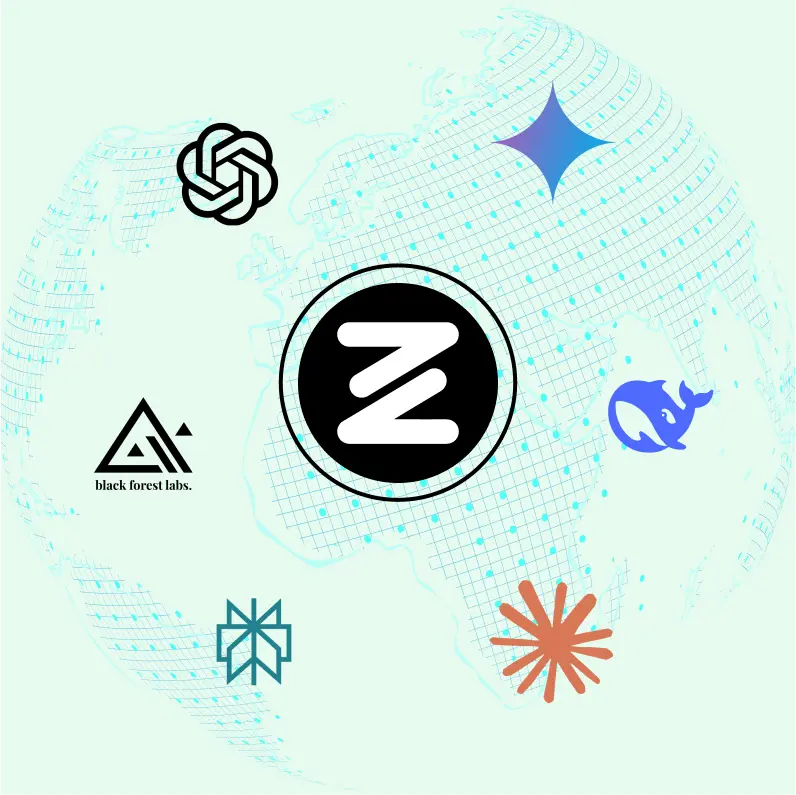
Speed run your documents
Upload documents to your Zemith library and transform them with AI-powered chat, podcast generation, summaries, and more
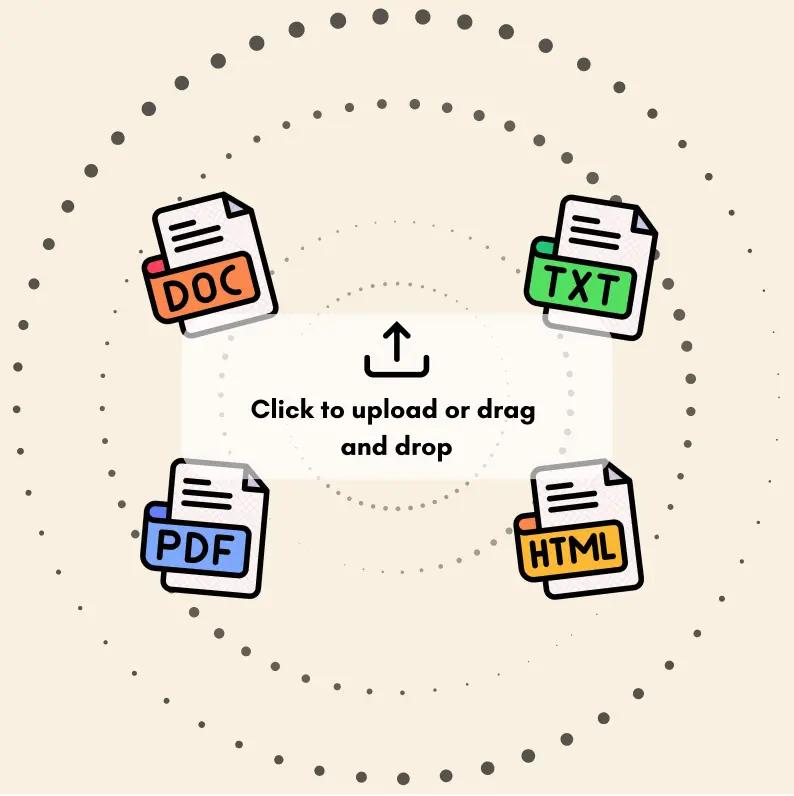
Transform Your Writing Process
Elevate your notes and documents with AI-powered assistance that helps you write faster, better, and with less effort
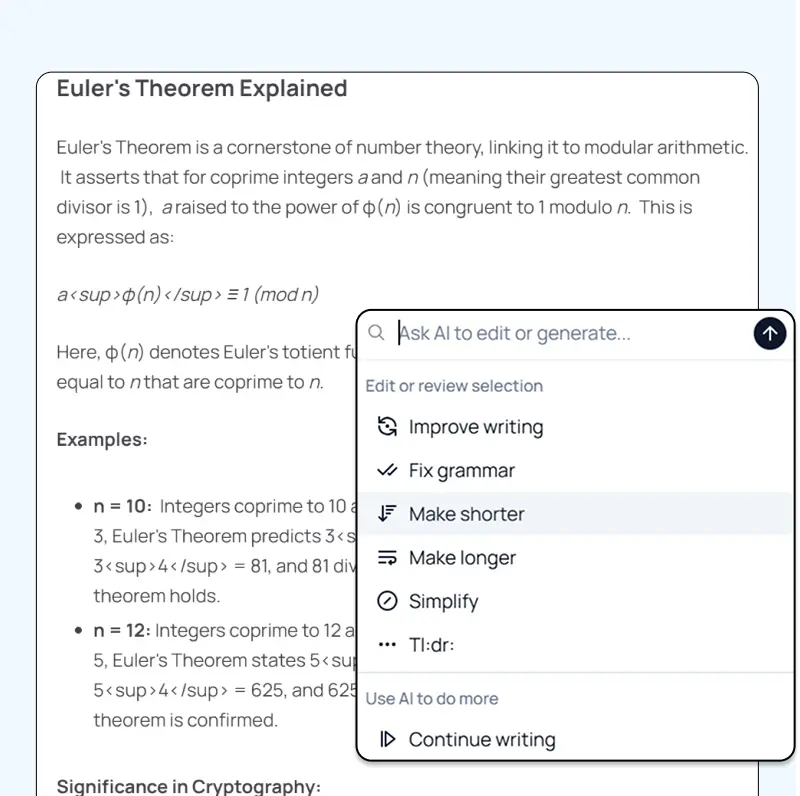
Unleash Your Visual Creativity
Transform ideas into stunning visuals with powerful AI image generation and editing tools that bring your creative vision to life
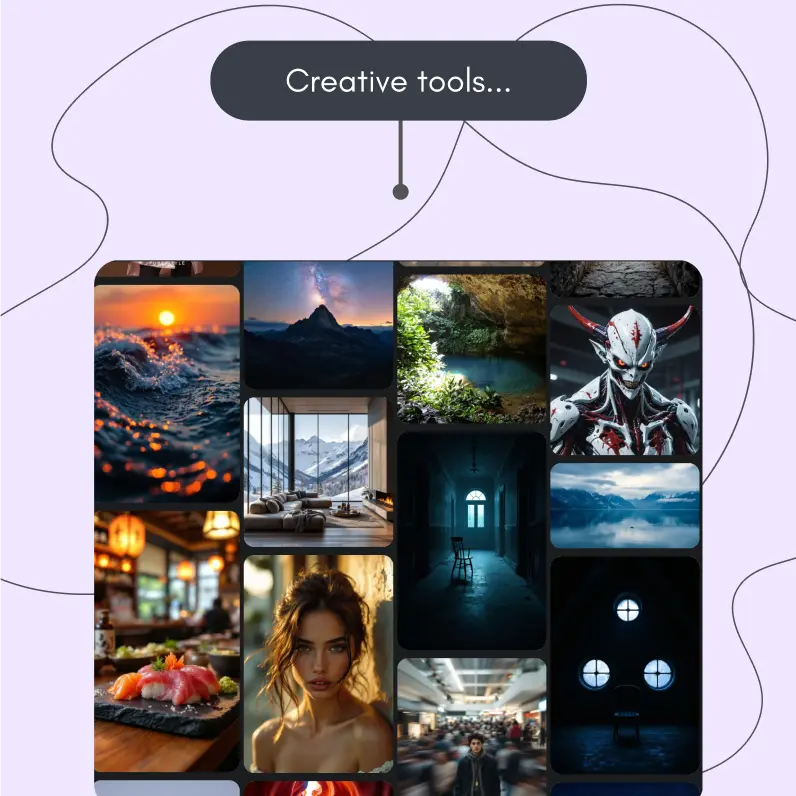
Accelerate Your Development Workflow
Boost productivity with an AI coding companion that helps you write, debug, and optimize code across multiple programming languages
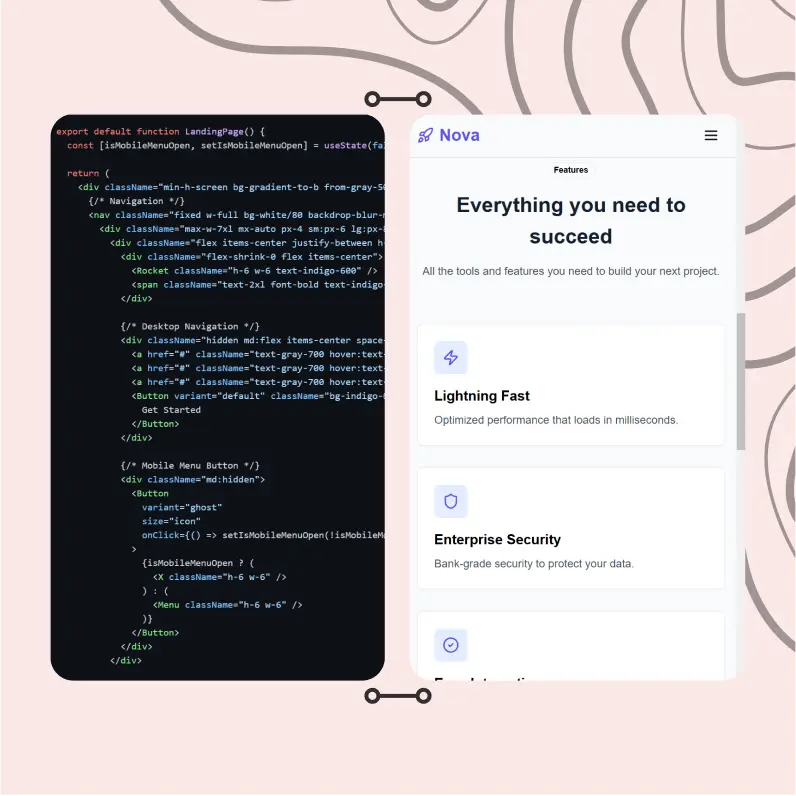
Powerful Tools for Everyday Excellence
Streamline your workflow with our collection of specialized AI tools designed to solve common challenges and boost your productivity
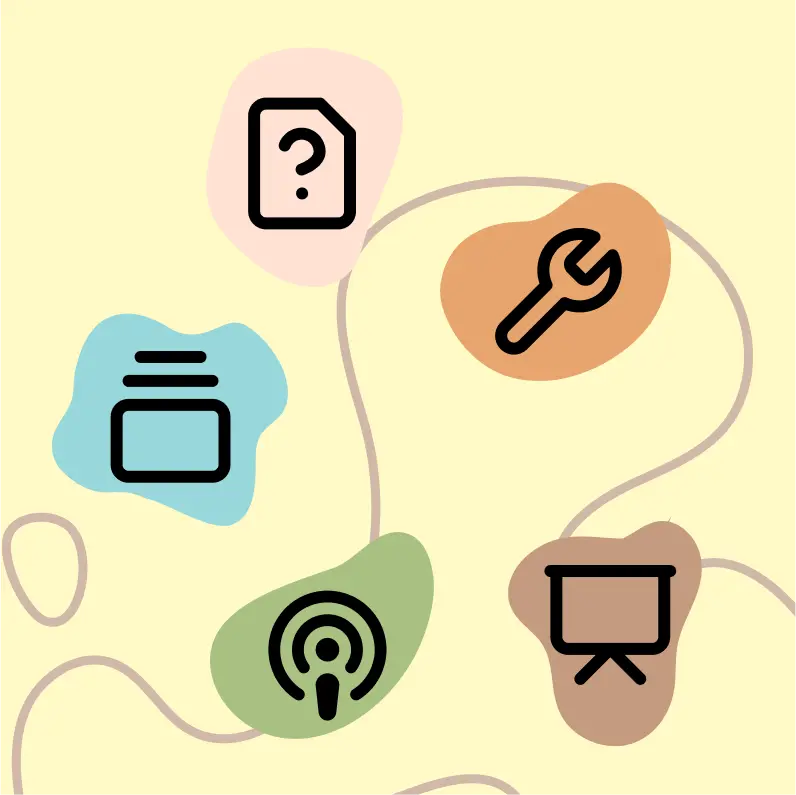
Live Mode for Real Time Conversations
Speak naturally, share your screen and chat in realtime with AI
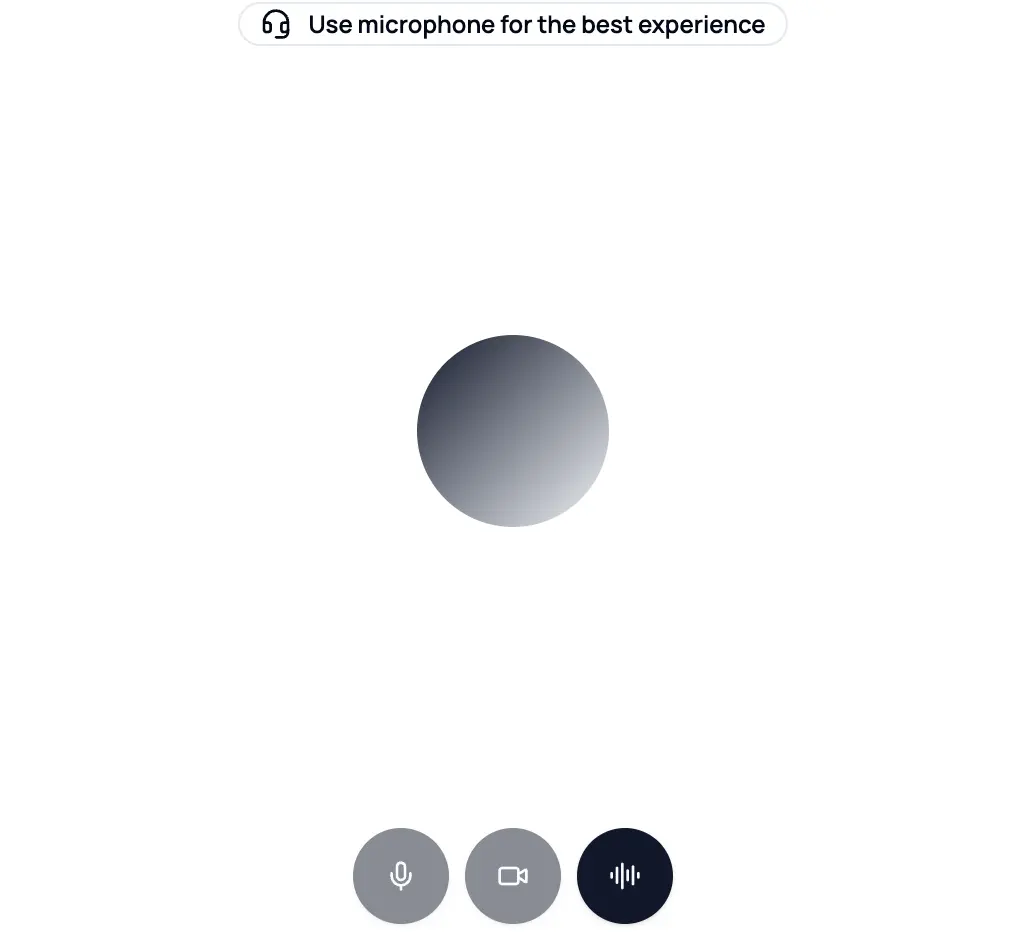
AI in your pocket
Experience the full power of Zemith AI platform wherever you go. Chat with AI, generate content, and boost your productivity from your mobile device.

Deeply Integrated with Top AI Models
Beyond basic AI chat - deeply integrated tools and productivity-focused OS for maximum efficiency
Straightforward, affordable pricing
Save hours of work and research
Affordable plan for power users
Plus
- 10000 Credits Monthly
- Access to plus features
- Access to Plus Models
- Access to tools such as web search, canvas usage, deep research tool
- Access to Creative Features
- Access to Documents Library Features
- Upload up to 50 sources per library folder
- Access to Custom System Prompt
- Access to FocusOS up to 15 tabs
- Unlimited model usage for Gemini 2.5 Flash Lite
- Set Default Model
- Access to Max Mode
- Access to Document to Podcast
- Access to Document to Quiz Generator
- Access to on demand credits
- Access to latest features
Professional
- Everything in Plus, and:
- 21000 Credits Monthly
- Access to Pro Models
- Access to Pro Features
- Access to Video Generation
- Unlimited model usage for GPT 5 Mini
- Access to code interpreter agent
- Access to auto tools
- 10000 Credits Monthly
- Access to plus features
- Access to Plus Models
- Access to tools such as web search, canvas usage, deep research tool
- Access to Creative Features
- Access to Documents Library Features
- Upload up to 50 sources per library folder
- Access to Custom System Prompt
- Access to FocusOS up to 15 tabs
- Unlimited model usage for Gemini 2.5 Flash Lite
- Set Default Model
- Access to Max Mode
- Access to Document to Podcast
- Access to Document to Quiz Generator
- Access to on demand credits
- Access to latest features
- Everything in Plus, and:
- 21000 Credits Monthly
- Access to Pro Models
- Access to Pro Features
- Access to Video Generation
- Unlimited model usage for GPT 5 Mini
- Access to code interpreter agent
- Access to auto tools
What Our Users Say
Great Tool after 2 months usage
simplyzubair
I love the way multiple tools they integrated in one platform. So far it is going in right dorection adding more tools.
Best in Kind!
barefootmedicine
This is another game-change. have used software that kind of offers similar features, but the quality of the data I'm getting back and the sheer speed of the responses is outstanding. I use this app ...
simply awesome
MarianZ
I just tried it - didnt wanna stay with it, because there is so much like that out there. But it convinced me, because: - the discord-channel is very response and fast - the number of models are quite...
A Surprisingly Comprehensive and Engaging Experience
bruno.battocletti
Zemith is not just another app; it's a surprisingly comprehensive platform that feels like a toolbox filled with unexpected delights. From the moment you launch it, you're greeted with a clean and int...
Great for Document Analysis
yerch82
Just works. Simple to use and great for working with documents and make summaries. Money well spend in my opinion.
Great AI site with lots of features and accessible llm's
sumore
what I find most useful in this site is the organization of the features. it's better that all the other site I have so far and even better than chatgpt themselves.
Excellent Tool
AlphaLeaf
Zemith claims to be an all-in-one platform, and after using it, I can confirm that it lives up to that claim. It not only has all the necessary functions, but the UI is also well-designed and very eas...
A well-rounded platform with solid LLMs, extra functionality
SlothMachine
Hey team Zemith! First off: I don't often write these reviews. I should do better, especially with tools that really put their heart and soul into their platform.
This is the best tool I've ever used. Updates are made almost daily, and the feedback process is very fast.
reu0691
This is the best AI tool I've used so far. Updates are made almost daily, and the feedback process is incredibly fast. Just looking at the changelogs, you can see how consistently the developers have ...
